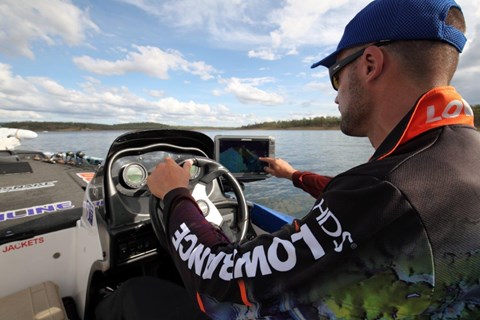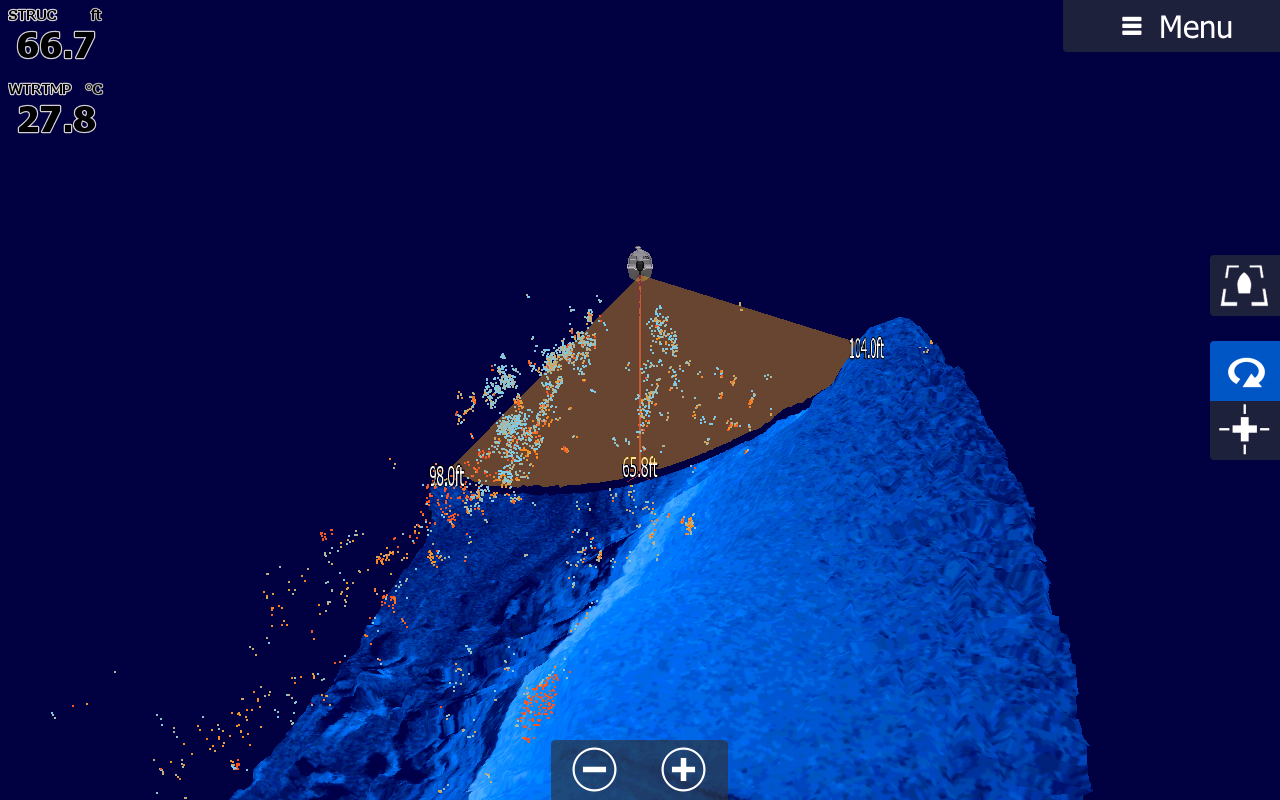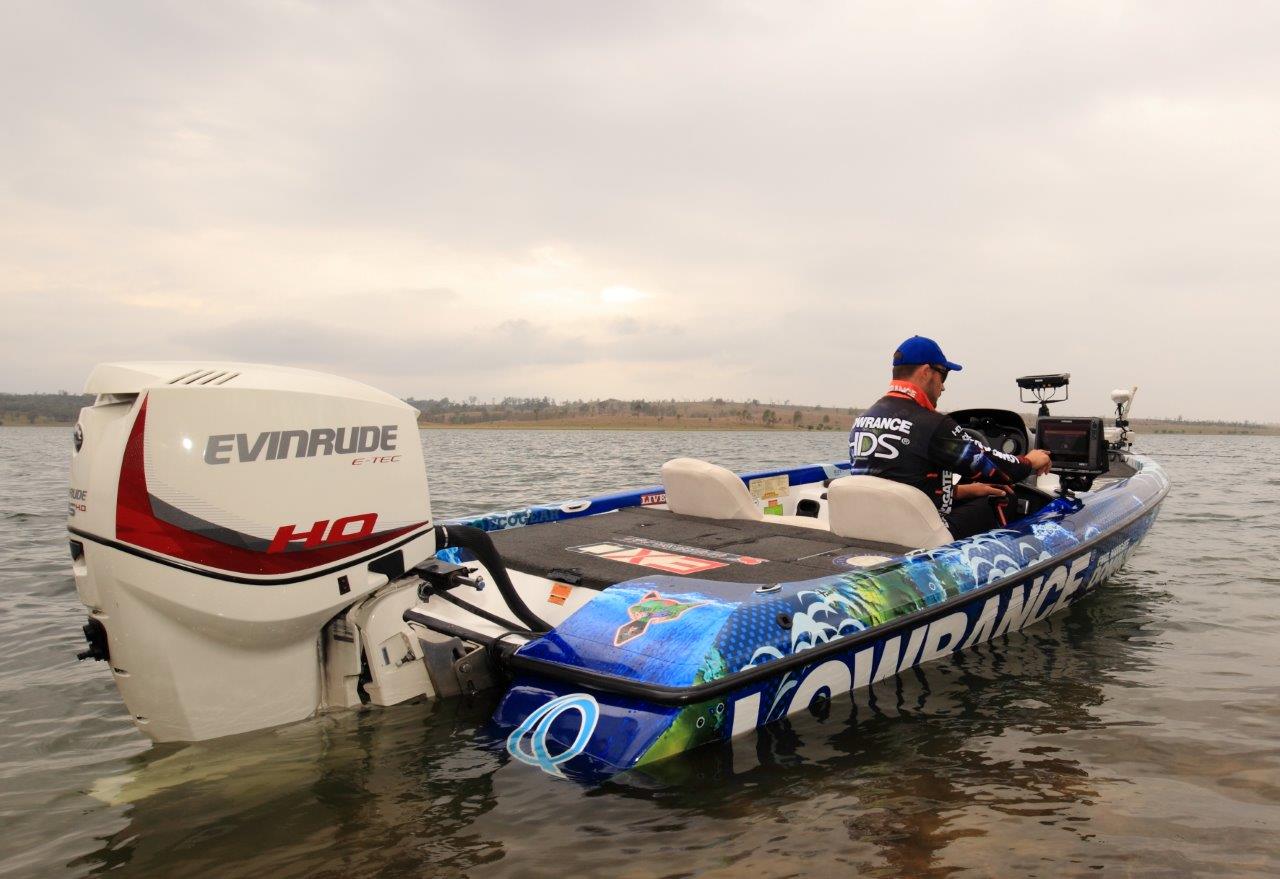StructureScan has been a pivotal instrument in helping me locate bass since its inception, there are two simple reasons as to why it is so effective for me. Firstly, I utilise standard sonar in search of various structure, bait schools and on some part schooling bass. Secondly, I use the DownScan function as a type of lie detector against the 83/200 sonar to show fish that are hidden or buried in heavy structure and sitting atop rock piles etc. Both of these 2D functions will remain important tools for me in the future as they will still help in determining exactly what is happening beneath the surface.
StructureScan3D has taken this technology one step further, locating bass and fish holding structure has never been so interactive and user friendly. I spend the majority of my fishing time trying to locate bass or likely fish holding structure, catching them is the easy part. User interaction with the 3D scan takes out a lot of guess work and enables me to pin point the exact position of the fish. On top of these functions the 2D scan is now clearer than ever before with the transducer upgrade that comes with the 3D setup. When set to left right StructureScan, I can easily change between 3D and 2D whenever I feel the need with a simple one button press. 3D enables me to view a full 180 degree picture of beneath my boat and I can now rotate that screen in numerous ways analysing what I am looking at to see the finer detail of what I used to look at and interpret myself in 2D.




















